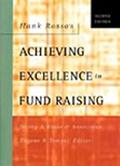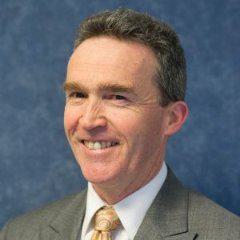Setting out and summarising the every-day business of excellence
- Written by
- Henry A. (Hank) Rosso
- Added
- June 03, 2013
Book review

Achieving excellence in fund raising by Henry A (Hank) Rosso and Associates.
Reviewed for SOFII Roewen Wishart.
How many of us know that the work of Hank Rosso and others at the Center on Philanthropy at Indiana University originated, or digested into applicable forms, much of the ‘received wisdom’ of professional fundraising and the ‘comprehensive development approach’? Many of us outside North America, and to some extent the UK, did not learn these principles formally. I learned some of these through talking to colleagues when I first ‘fell into’ a fundraising job fifteen years ago, or in intermittent one-day training seminars. Early on I deduced them from my own experience and only later learned that others had already formalised them into a body of knowledge.
If you have not read Rosso and his associates’ work, I thoroughly recommend this compendium of 500-plus pages. In it we find the analytical models of the ‘donor pyramid’, the ‘campaign planning cycle’, and the ‘concentric circles, growing outward’ of the constituency model (see diagram). More important, we find coherent expression of a philosophy. A philosophy that says,
- Fundraising is the art and science of bringing together donors’ aspirations and a socially useful organisation with a mission.
- That we must teach ‘the substitution of pride for apology in fundraising’.
- That ‘fundraising is values-based; values must guide the process.
Hank Rosso’s own pages, ‘A Philosophy of Fundraising’, are an eloquent summary of this. They should be read by every not-for-profit board member, every senior manager and every fundraiser.

The second edition was published in 2003, yet only a few points in a few chapters are obviously overshadowed by developments since. The most obvious candidate for a use-by date is the chapter ‘The Internet as a Fundraising Vehicl’e. Yet even this still states important strategic principles that remain unchanged by the rapid growth and diversity of the internet, and can be usefully applied to new social media.
If you are new to fundraising, this is a useful first read, particularly if your initial role is relatively specific (for instance, in a large not-for-profit with an established programme). Try the chapters that cover what you are not doing and learning at work.
If you are an experienced fundraising manager, read one or more of the chapters from ‘Part Three: Building Blocks for Successful Fundraising’. These cover the annual fund, major gifts, endowment, capital campaigns, and planned giving. You might get a nasty but useful surprise, when you realise that your organisation is not actually doing some of the basic suggested element. Or, at least, is doing them without the clarity and organisational memory of planning, documenting, and evaluating them.

If you are an experienced specialist fundraiser, consider reading chapters on the parts of our profession which you don’t like or understand. I am reluctant to use special events. I don’t enjoy working in them and find it hard work managing teams who work on them. After I read the chapter ‘Special Events for the Twenty-First Century’, I reconsidered events in the wider context of the ‘constituency model’ of fundraising and of the whole range of donors’ needs, and concluded that I have been looking at the value of events too narrowly.
If you are a single fundraiser, or a volunteer in a cause with no fundraising staff at all (perhaps in addition to a paid fundraising job), read the heartening chapter ‘Fund Raising at the Grassroots Level’. This re-affirms that the underlying philosophy of planned and relationship-oriented fundraising guides us to effective fundraising at this level too.
The received wisdom of North America does not always translate to other countries. But it’s a lame response to say (as we hear in Australia, and I suspect elsewhere) ‘but North America has a stronger and longer tradition of philanthropy… we can’t expect to apply those ideas here.’ One merit of the Rosso philosophy is that it’s centred on the not-for-profit cause, its values and its constituencies. Fundraising techniques are tools to adapt and use for each unique cause, respecting the specific characteristics of place and people. This book is a fine benchmark against which each of us can measure up how well we use the tools for our cause, in our country.
Additional interesting info

The Rosso Medal was created to honour Henry A. ‘Hank’ Rosso (1917-1999), a founder of the Center on Philanthropy and founding director of its public service programme, The Fund Raising School. Since 1990, the Center on Philanthropy at Indiana University has presented this annual award, The Rosso Medal, to exceptional individuals with a long tradition of philanthropic leadership. On this occasion it was presented by Eugene R. Tempel, executive director of the Center on Philanthropy.
© Roewen Wishart 2009
About Rowen Wishart
 Roewen Wishart, major gifts fundraising specialist at Bush Heritage Australia.
Roewen Wishart, major gifts fundraising specialist at Bush Heritage Australia.

















